A sickness of the soul: remembering Adam and Tim Davis
Correction submitted by Delta Company paratrooper: five, not four, paratroopers died from the IED. “Matthew Taylor died September 27th, 2007 from wounds suffered from the IED. Rogers was killed along with Davis, Rogers, Johnson, and 1SG Curry in the D11 vehicle.”
Not every man has a positive relationship with his brother. Tim Davis did; he loved his younger brother Adam, and looked up to him. Tim was shy, but Adam was gregarious and outgoing. The two brothers grew up in Idaho, had the same History teacher in high school, and attended the same Basic Training class in 2006. They dreamt of joining the same unit. Things didn’t work out the way they planned, though. And when Adam deployed to Afghanistan in May of 2007 with the 173rd, Tim wasn’t there—he was in Fort Hood, Texas. That July, driving down a dusty road in Sarobi District, Paktika Province, Adam died in an IED blast that killed his First Sergeant and two other soldiers. He was 19 years old.
A part of Tim died, too—a hole opened up in him that he attempted to fill with alcohol to no avail. After being discharged from the Army, he grew suicidal.
“Everything he did from the time he failed Airborne School
was affected by what he perceived as letting Adam down,” said Tim’s father, Tim
Davis, via Facebook. “His job, as far as he was concerned, was to keep Adam
safe.”
Life is filled with connections and causes that seem obscure
at the time. One of the reasons war holds such fascination for its participants
is that causal relationships all become clear in retrospect. A man dies,
another man lives. A brother or son or daughter dies, a brother or sister or
father or mother lives. One can trace grief back to a particular choice, a
moment in time. Grief is knowable. Loss is comprehensible. Guilt is something a
person can carry with them like a boulder, like alcoholism, drug abuse,
despair, and suicide.
This memorial is for Adam Davis, a Charlie Company and then Delta
Company paratrooper and Sky Soldier of the 173rd Airborne Brigade
Combat Team. It is also to his brother Tim Davis, a National Guardsman who
never got over Adam’s death, or the pain of separation that preceded that
death. It’s the story of two men from America’s heartland who wanted to serve
their country together, neither of whom are alive today.
Adam Davis
Adam Davis was born on July 27, 1987 in Twin Falls, Idaho to
Tracy Carrico. His grandfather served in the Navy during WWII. In his obituary,
Adam’s described as a fan of science fiction and fantasy novels. The obituary
describes him as having enjoyed spending time with his horse, hiking, and
listening to music.

Jerome, Idaho, the town in which Adam is buried, has been
growing steadily since 2000. Since the census placed the population at 7,780,
it has expanded to over 11,000 people, driven in part by expanded employment
opportunities, and partly by the spillover from those opportunities (15% of the
population lives below the poverty line, a bit above average for the U.S.).
Located a few km northwest of Twin Falls, it’s also a few kilometers north of
the Snake River. The entire area was nicknamed “Magic Valley” at the turn of
last century, when two industrial dams “magically” tamed the Snake River,
transforming previously uninhabitable territory into beautiful land, ideal for
human habitation.
Nearly 12% of Idaho resides in the “Magic Valley,” or about
185,000 people. Adam was the first from the area to be killed during Operation
Enduring Freedom.
Long way home
Adam dropped out of high school, but finished his GED at a
local community college. When he joined the military, he had a plan: qualify
for the GI Bill, go to college, get a degree, and become a professor of
English. When he finished training, he received a piece of unexpected news:
rather than going to the 82nd Airborne with his brother Tim, Adam
was to be sent to the 173rd Airborne, in Italy.
His introduction to the 173rd was rocky, as it
often is with elite units. When assigned to 1-503rd’s Charlie “March
or Die” Company, the first thing he did was walk up to the hardest sergeant in
the unit, Sergeant Berkowski (a mountain of a man and a great non-commissioned
officer to everyone who knew him), wearing a Weezer tee-shirt with his hands in
his pockets and said “I’m supposed to be in Charlie Company.” One of the squad
leaders in first platoon, Adam Alexander, remembered this episode and the
‘smoke session’ (a physical reminder of the importance of discipline) that
followed via email, and described Davis as a competent soldier who “had a lot
of heart.”
Adam’s first roommate at the 173rd was Phil
Massey, a soldier who’d arrived in Charlie Company’s 1st Platoon (to
which Adam was assigned) a week before. Davis was plugged into Weapons Company
as an ammo bearer for the 240B medium machinegun, and stood out among the other
paratroopers for his size (he was shorter than most) and his tenacity (he made
up for his height with his determination never to quit or be last). Massey
developed great affection for his small roommate, writing via email that Davis
“in PT would sometimes take on the task of bigger guys and lead the way… he
would clean his weapon as fast as anyone else in the squad, and was always
there when needed. He was a soldier and a paratrooper, and nothing stopped the
little guy’s spirit.”
Davis’s platoon leader, Matt Svensson, had similar things to
say about the Idaho native’s resolve, discipline and professionalism.
First Platoon’s Platoon Sergeant at the time, then-SSG
promotable Steven Voline, highlighted Adam Davis’s professionalism while
discussing his value as a soldier, and went out of his way to describe why
Davis was ultimately moved from Charlie Company to Delta Company, the mounted
heavy weapons platoon: “Everyone loved having him around because he kept the
mood light and always had a smile,” Voline said. “Even when times were tough
and training was rigorous, he continued to keep a positive outlook.”
Voline described evidence of the young paratrooper’s resolve. “I remember being at a range somewhere in Italy and we were doing CQB (close quarters battle) qualification tables and his magazine changes were too slow. If I’m not mistaken, he stayed awake doing magazine changes through the entire night iteration training for each Platoon. It ended up being an extra 3-4 hours with his Squad Leader (Sergeant Berkowski) just dropping a mag and inserting the follow on.”
As every soldier knows, maintaining a sunny disposition and
positive outlook under those circumstances is trying for the best tempered
soldier. Having a paratrooper like Adam around was a boon for his fellow
soldiers, and Voline said that’s why he sent Davis to another Company when the
tasking came down from higher to send Charlie Co soldiers to Delta Company:
“Adam was the type of soldier who’d succeed anywhere,” wrote his former Platoon
Sergeant.
Delta Company
When Adam moved to Delta Company, he was quick to make
friends there, and developed a reputation as an easygoing, good-natured and
dependable soldier.
“Davis was a lot like me,” wrote Matthew Frye via email.
Then a First Lieutenant, Frye was Delta Company’s Fire Support Officer, and
remembered the last time he saw Adam. “He was a funny kid who kept his platoon
on its toes with his shenanigans.” Days before Davis’s fateful final patrol in
Afghanistan, he was talking with Lieutenant Frye about a soon-to-be-released video
game, Medal of Duty: Airborne.
“Occasionally the officers would square off with the
enlisted in a video game where we could bond with them in a somewhat
professional manner,” wrote Frye. “Some smack talking would be involved and a
few pushups for the losers would be owed at the end. I had ordered the video
game a couple of days prior and told him when he got back from patrol it would
be game time.”
That game time would never arrive.
Tim Davis
Tim Davis died, some say, of heartbreak over the loss of his
younger brother Adam. Things started going badly for him when he went AWOL from
Basic training in order to be closer to Adam—the two believed they had signed
up for an Army program that guaranteed they’d both be assigned to the same
unit. While Adam was assigned to the 173rd, though, Tim came down on
orders for the 82nd Airborne.
“Adam was so happy he came down on orders for Italy until Tim told him that he got Bragg, then everything went sour,” said Anthony Roszell, who went to Basic training with the brothers. Roszell, who ended up in C Company’s first platoon with Adam, described the brothers as especially close, “pretty much attached at the hip,” he wrote via Facebook. They always hung out together, with Tim staying on at Fort Benning to keep his brother company, even though he’d gone AWOL and missed his chance at the 82nd Airborne on Fort Bragg.
We are the product of our backgrounds, and especially so the
network of relationships we build during childhood. Tim and Adam built up a
very powerful bond, so powerful, in fact, that they joined the military
together. When Adam was assigned to the 173rd Airborne in Italy, it
came as a shock and a great disappointment to Tim.

The outrage of what Tim saw as the military’s betrayal impacted his performance at Airborne School, and he failed out. He was sent to Fort Hood, where he served with the Army until Adam’s death. After that, it was a sequence of bad choices or plans that didn’t amount to much. He was never able to reverse the string of disappointments; a successful stint as an Army National Guard recruiter was not enough to permit Tim a combat deployment, as he hoped, in 2010; following that, he was discharged, and worked toward a career in cabinetry. None of that made up for the dashed hopes of serving with his brother. While life had never been easy for Tim, when Adam died, something in Tim’s life stopped, too.
“Tim had a very hard time in life,” said Amber Watson, Tim
and Adam’s sister. “He was always worried about something, or thought something
was wrong.”
A phenomenon of the Social Media age, Tim’s Facebook page is
still active, here.
This means one can read his wall, and see his struggle unfold in real
time—anger with life, struggles with faith, sadness at having lost his brother.
Frustration with a senseless world where relationships and events don’t have meaning, necessarily. Where
things don’t work out. At one point, he mentions running into his high school
crush, who’s named. This person exists on Facebook. From her profile, she’s
married, with children—happily employed.
“I’m sure [Tim] felt like he let Adam down,” wrote their
father, Tim Davis. “He said Adam wanted them to be together. Tim was glad to
return to Fort Hood.”
A mission south
Paktika Province is a sparsely-populated area about 33%
larger than the U.S. state of Delaware that includes desert, mountains, and
intermittently-fertile valleys. Those valleys where rain falls in sufficient
amount to sustain life hold most of the people. The remainder of the areas hold
scattered tribes who make do the best they can in a harsh and uncompromising
climate. The elevation varies from 6,000 to over 9,000 feet on some mountains.
In 2007 the Army was pursuing Counter-Insurgency (or COIN)
Doctrine. The purpose of COIN is to defeat insurgency by refusing the enemy
military or propaganda victories, while allowing the government to provide
people with more and better assistance than the insurgents. The common term for
COIN was “winning hearts and minds.”
At the time, units would “own” battle space—be responsible
for defeating enemy activity there, and also for spreading goodwill among the
populace. Adam’s company, Delta, was a bit smaller than the other units.
Geographically, they were responsible for a larger space than some of the other
units, but in terms of population, their area was the least populated. Afghans
were spread out in villages of some dozens or hundreds of people, depending on
their proximity to water, roads, or the riverbeds (wadis in the local
tongue) that served as roads in many areas.
According to Matthew Frye, Delta Company had been training
Afghan National Police (ANP) in far-flung district centers when the unit
arrived in May of 2007. By July, it had become clear that the distances required
to travel were exposing the unit to risk, and making it more difficult to accomplish
a key tenant of COIN: living with the population one was attempting to protect
or train. When the unit had arrived in theater, there was no obvious place to
quarter an entire unit’s worth of paratroopers, so Delta began evaluating
suitable locations for a permanent Company base as part of their training
missions. On July 23rd, during a mission south from the Battalion
base in Orgun, a Delta convoy struck an IED in Sarobi District. Adam J. Davis,
Michael S. Curry, Jr., and Travon T. Johnson were killed immediately. Jesse S.
Rogers expired later from his wounds.
The IED
Improvised Explosive Devices or “IEDs” were becoming more
sophisticated and prevalent in Afghanistan in 2006-07. For years, the U.S.
military hadn’t needed to worry about roadside bombs in Afghanistan,
encountering ambushes and sometimes large enemy attacks in the mountains,
instead. But trans-national insurgents or terrorists would take successful strategies
from one place—in the case of IEDs, Iraq—and bring them elsewhere. IEDs began
making their way into Afghan roads, and then, became increasingly deadly.
As is often the case with weapons, the Army found itself in
an arms race with the Taliban and Al Qaeda, in which the Army would develop a
way to defeat IEDs, and then the bomb-makers would develop a new method or
procedure to overcome the military’s technological advantage. In the beginning
of the conflict, the most popular type of roadside bomb in Afghanistan had been
pressure-plate or pressure detonated IEDs, where the weight of the vehicle
would set off the bomb, blowing anything above it to pieces. This had the
undesirable (from insurgents’ point of view) effect of killing civilians as
often as it did Americans. By 2006-07, they were relying increasingly on
“remote detonated” IEDs, triggered by someone with a walkie-talkie or cell
phone, who could ensure that the correct target (US forces) were being struck.
As a result, US forces equipped their vehicles with signal-jamming devices that
prevented signal-initiated devices from detonating. Delta Company had such
devices installed in their vehicles.
The IED that struck Adam’s vehicle, on which he was turret
gunner, was a large pressure plate IED. The electronic jamming system was
useless.
A sickness of the soul
The deaths of Adam and the other paratroopers—especially
Michael Curry, who was nearing retirement and had a great reputation among his
peer NCOs—struck Delta Company hard, but also took a toll on the Battalion.
July of 2007 was a difficult month for the 173rd Airborne Brigade,
with Major Tom Bostick of the Brigade’s cavalry unit (another beloved
paratrooper, and former Bravo or “Legion” Company commander in Adam’s
Battalion) dying in combat in Nuristan, and Juan Restrepo of 2nd
Battalion dying in Kunar Province (a documentary named after
an outpost named in Restrepo’s honor is one of the finest of its type to
describe fighting in Afghanistan).
The paratroopers who died that day are still remembered by
the people they served with, and by their families. But the memory of Adam was
too much for Tim.
“TJ and I became close as we got older,” said Watson, Davis’
sister. “I was the one he’d call when he wanted to talk… the night before
[Adam’s] funeral he went and had the coroner open the casket, and it made him
very unhappy.”
Watson wrote that Tim struggled with suicidal thoughts, and
even attempted to act on those impulses. “I went to see him in rehab a couple
times,” she wrote. On January 18, 2016, he passed away. His
obituary reads “the most we can tell is that he succumbed to a sickness of
the soul which had been with him since his brother Adam passed away nine years
ago in Afghanistan.”
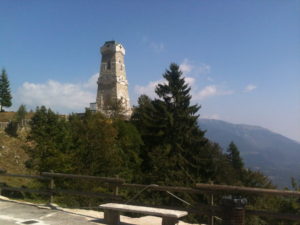
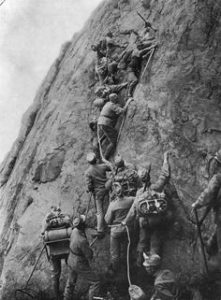
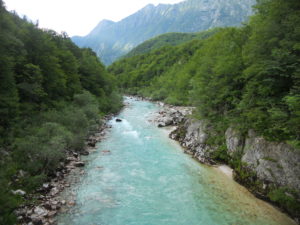
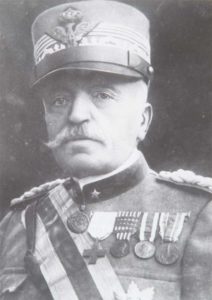
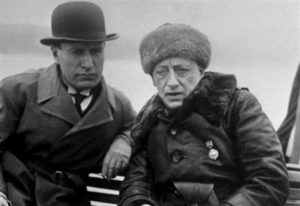
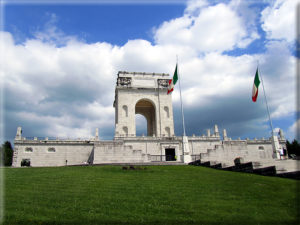
 ings, though, it’s important to recognize that he spent 5 years in exile for publishing defamatory remarks public statements about Mussolini and Hitler, then was imprisoned for similar anti-fascist/Nazi activity in 1938, 39, 41, and 43. He was a valorously decorated combat veteran of World War I, which means something, especially considering his service with Italy’s premiere infantry unit of the time, the Alpini.
ings, though, it’s important to recognize that he spent 5 years in exile for publishing defamatory remarks public statements about Mussolini and Hitler, then was imprisoned for similar anti-fascist/Nazi activity in 1938, 39, 41, and 43. He was a valorously decorated combat veteran of World War I, which means something, especially considering his service with Italy’s premiere infantry unit of the time, the Alpini.